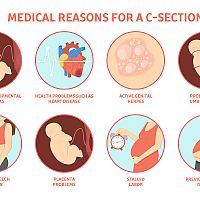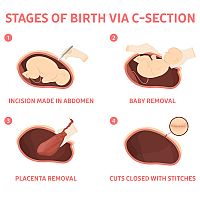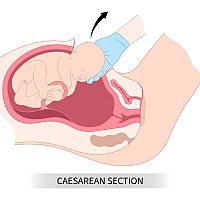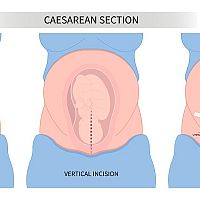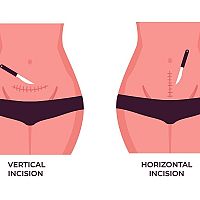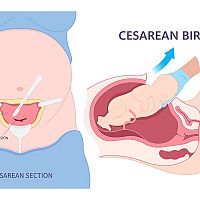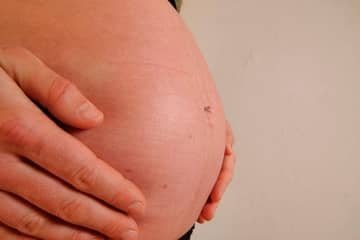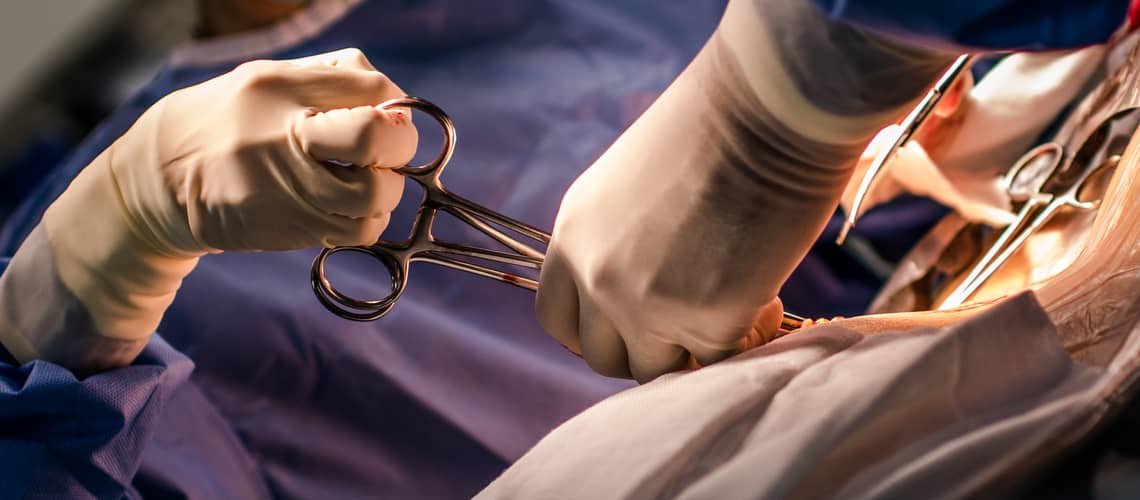
Cesarean section under general or spinal anesthesia. In which week is it done and what are the experiences
A sample course of natural childbirth is the dream of perhaps every woman. However, there are factors that can complicate this dream at a moment, and that's when a caesarean section comes into play. While in the ancient past, a section was applied only if a woman died during childbirth and thus it was necessary to save the child, today a caesarean section is performed in order to avoid any complications during the arrival of the baby in the world.
What does a caesarean section consist of, how does it take place, in which week is the planned caesarean section performed, how long does it take to heal from its consequences, but also other important information about anesthesiological methods in this form of childbirth, we have summarized in the following paragraphs of our article.
What is a caesarean section?
Caesarean section is a safe procedure, which consists in surgically cutting the abdominal wall and uterus of a pregnant woman, and then removing the fetus through the created opening. For this form of birth, especially if complications occur during childbirth or during pregnancy, which can potentially endanger the life of the mother or the child.
The belief that caesarean section is a kind of simpler way of giving birth has been spreading in society for a long time. Although people's opinions differ, the truth is that even during a surgical procedure such as a caesarean section, a number of different problems can occur, while the mother's recovery is often considered more painful, difficult and lengthy compared to a traditional birth.

When is a planned caesarean section performed?
Indications for caesarean section can be different. In some foreign countries, even the pregnant woman herself can decide for a caesarean section, while the justification mostly lies in the reputedly easy course of this operation with the aim of bringing the baby into the world. In Slovakia, however, the possibility of a caesarean section must be assessed by a doctor. In our country, it is not possible to perform a caesarean section at your own request without a relevant justification and its assessment by a doctor.
A woman can give birth by caesarean section only if a possible risk during vaginal birth is proven. Doctors may choose to perform a caesarean section in situations where, during or before pregnancy, they notice and identify potential risks that prevent a natural birth, thus endangering not only the pregnant woman, but also the baby.
The most common reasons for a planned caesarean section include the woman's old age at the time of the first birth, a narrow pelvis due to the size of the embryo, permanent, high-risk diseases of the lungs or heart of the pregnant woman, long-term problems with the hip joints, a protruding disc or problems with the eyes, which can worsen the birth itself.
However, a caesarean section is primarily required by a woman who has undergone a uterine surgery in the past, especially if the genital organ was surgically opened during the procedure. A caesarean section is possible even when a woman has a demonstrable phobia of natural childbirth and there is a suspicion that she would not cooperate during it, and thus more complications could occur. In any case, it is true that if the doctor has no reason to give birth by caesarean section, and therefore there is no suspicion of a risky course of vaginal birth, the natural way is always chosen primarily.
In what week is a planned caesarean section performed? From the point of view of the time horizon, the procedure is usually performed in the 39th week of pregnancy, approximately ten days before the due date, in order to avoid spontaneous labor during the operation. The term is determined only after confirming the possible risk for which a caesarean section is necessary. The exact day is also determined on the basis of pre-operative examinations examining the state of fetal development and the state of health of the mother.
A planned caesarean section is performed under spinal anesthesia, which means that only the lower half of the pregnant woman's body is numbed during this procedure. This means that the woman does not feel the pain, but registers certain actions that the doctor performs during the caesarean section. The advantage of spinal anesthesia is that no components of the anesthesia itself penetrate into the baby's blood.

Acute caesarean section
Childbirth is a very exhausting and often lengthy process, during which countless different complications can occur. If the health and life of the coming baby or the mother is in danger, the doctor can perform an acute caesarean section. Risks in the form of incorrect position of the fetus, separation of the placenta, slowed heart rate of the fetus itself and its inability to receive oxygen or adhesion of the placenta to the uterus most often lead to such a decision. Sometimes childbirth with an unreasonably long course can lead to caesarean section.
In the event that any of the above-mentioned problems occur during a natural birth, the medical staff performs an acute caesarean section, during which the mother is under general anesthesia. This ensures the immediate stabilization of the muscles and nervous system of the mother, thus the doctors avoid further possible complications caused by the conscious patient, who after proceeding to an acute caesarean section may find herself in a very bad emotional state affecting the basic functions of her body, such as heart rate or oxygen intake.
Cesarean section procedure
A caesarean section is an operation that requires a certain amount of preparation in the form of a consultation with a doctor, but also with an anesthesiologist in the specific hospital where you are going to give birth. Each institution has different requirements regarding this form of birth, and therefore it is better to inform yourself in advance.

Preoperative steps leading to caesarean section
As before other planned operations, several health tests are performed before a caesarean section, such as an EKG, blood pressure check, and anesthesia examination. The doctor must also review your previous pregnancy history, and therefore the results of your examinations, in order to be prepared for all potential complications. Subsequently, the mother signs an official declaration of consent to the operation.
A pregnant woman should not eat or drink for 6 to 12 hours before the operation. Some institutions even require the application of an enema, and thus a means to purify the digestive tract. One hour before the operation, the pregnant woman's legs are pumped and the necessary medicines are administered due to the possible formation of blood clots during the operation. You arrive at the hospital on the day of the scheduled caesarean section.
How long does a caesarean section take?
Compared to the past, the length of the routine procedure has been significantly shortened. It is mostly a prompt procedure completed within 30 to 60 minutes, while the mother's body undergoes a minimal load. Since the caesarean section is performed under spinal anesthesia, the woman in the supine position with her limbs attached by a strap does not feel any pain due to the incision along the line of the pubic bone.
The incision is made low enough to be covered with underwear or hem of the lower part of the swimsuit, which, however, requires pre-operative hair treatment. The surgical incision is applied to the skin and abdominal fat, while the abdominal muscles are subsequently only pulled away from each other, which favors the speed of their regeneration. Another incision is required in the wall of the uterus itself, from where the doctor then pulls out the fetus.
After the extraction of the fetus, it is also necessary to remove the placenta, which is made possible by pulling the umbilical cord. The procedure is completed by suturing the abdominal wall with special absorbent sutures. The baby is shown to the woman in the operating room, where the primary treatment of the newborn also takes place. The mother and child are then transferred to the appropriate department.
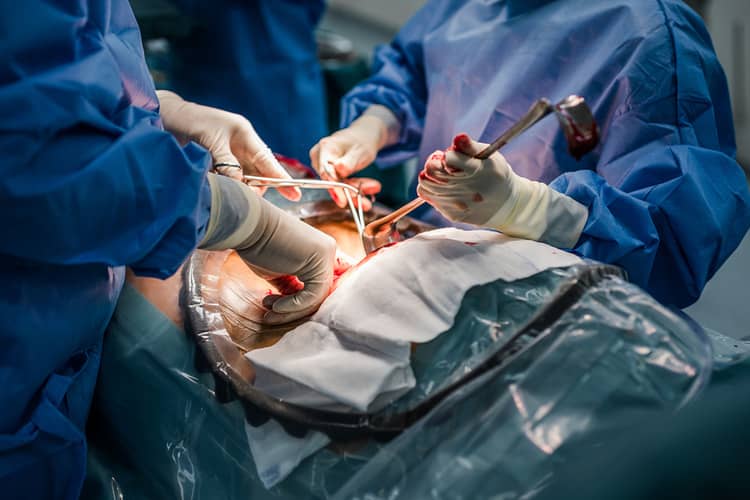
Caesarean section and scar healing
Birth by caesarean section, but also the subsequent recovery process, is not an easy matter. The mother should start to move significantly already 12 hours after the operation, while the baby is mostly in the care of the neonatal ward and the pediatric nurse in the first days. The urinary catheter is removed half a day to a day after the operation, when the mother is in sufficient condition to be able to go to the toilet on her own or with the support of a nurse.
Apart from basic hygiene, the scar does not require any extra standard care. Healing of the wound after caesarean section occurs after approximately 3 weeks, while normal, painless and unrestricted functioning of the woman occurs after 6 to 8 weeks. Provided that the wound does not become infected, after a caesarean section, the mother and baby go home after 3 or 4 days after the operation.
Caesarean section - experience
As is usually the case, women's experiences with caesarean sections vary. While some will go through the recovery process with minimal pain, others may have complications in the healing of the scar, which may become infected in the first weeks after the operation, with the most common accompanying phenomena being not only fever, but also bleeding from the wound site, nausea and exhaustion due to blood loss.
Moms on discussion forums emphasize the importance of carefully choosing the right hospital, or maternity hospital. One of the most important aspects of a caesarean section is the regeneration process after the procedure, which should be as pleasant as possible for the mother. However, this factor largely depends on the hospital staff of a particular medical facility.
The most frequent questions - FAQ
Are you also interested in other information in connection with caesarean section of an acute or planned nature? Additional questions that were not answered in the text of the article or in the question and answer section can be asked in the comments below the article. We will answer them as soon as possible.
How much is paid for a caesarean section?
Can I refuse a caesarean section if I wish to have a natural birth?
If I give birth by cesarean for the first time, can I have another natural birth?
Can there be any complications in the next pregnancy after cesarean delivery?
Gallery
Pridať komentár

